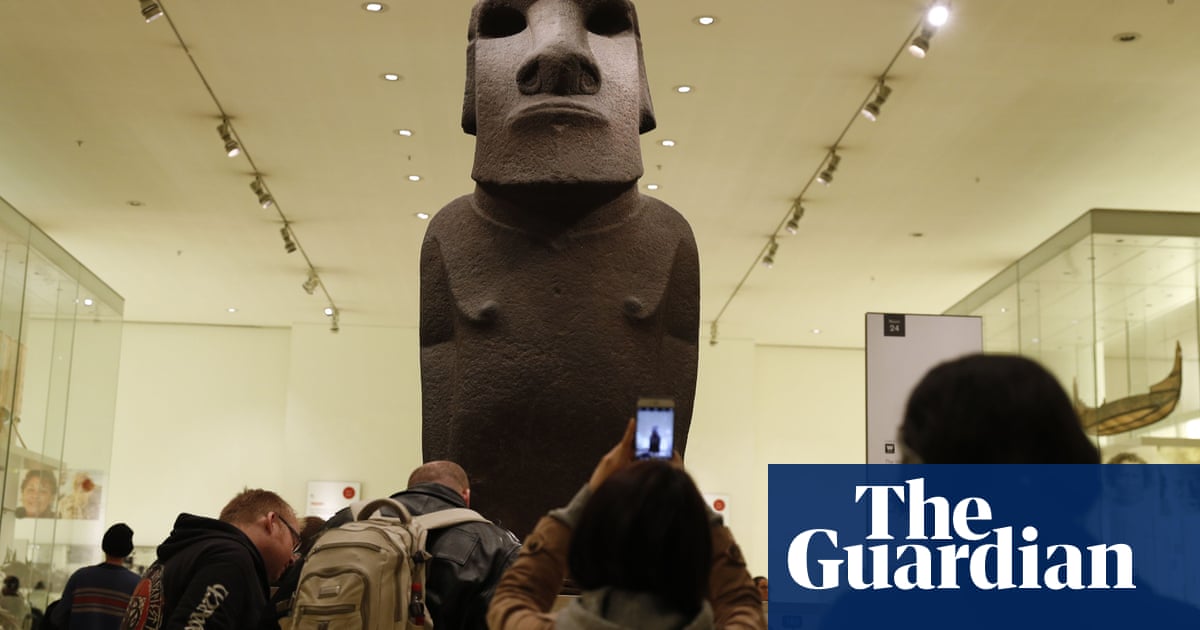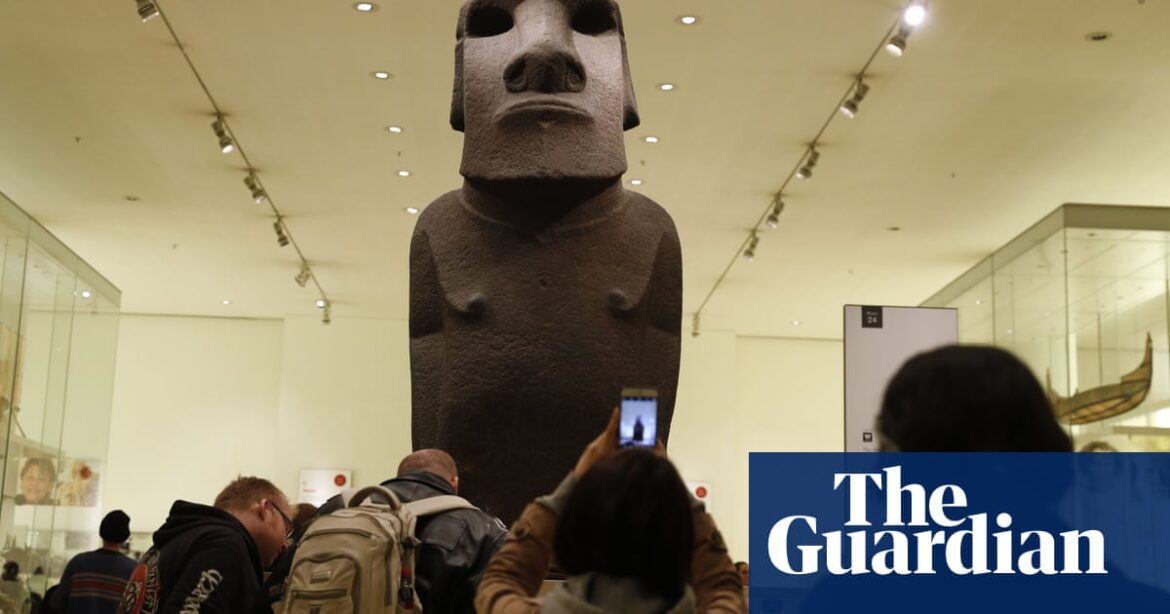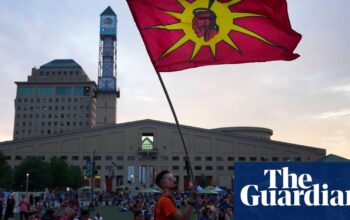
The British Museum is dealing with an increase in negative comments on social media from individuals in Chile. They have been bombarding the museum’s Instagram posts, demanding the repatriation of a moai statue, a type of stone sculpture found on Easter Island.
The museum possesses a pair of moai that were removed from Rapa Nui (also known as Easter Island) by British surveyors in 1868. There has been a persistent request for the British to restore the moai to their original location in Rapa Nui, which is currently under the jurisdiction of Chile.
Since the beginning of January, people using social media in Chile have flooded the comment section of the museum’s Instagram page. They have also directed their comments towards the museum’s YouTube and Facebook pages.
As a result, the museum had to disable comments on recent Instagram posts. However, they have now re-enabled most of the comments, although there are still restrictions on certain posts.
The virtual movement started when popular influencer Mike Milfort from Santiago urged his 1 million followers to use their keyboards and request the museum to give back the monoliths.
The topic of the moai theft is frequently mentioned in Milfort’s popular videos, causing a hashtag trend that even caught the attention of Chilean president Gabriel Boric. He showed support for the cause in an interview on Chilean radio.
However, the decision has faced backlash from the inhabitants of the island. According to Pedro Edmunds Paoa, the mayor of Rapa Nui, Boric should not use this issue for political gain as it holds significant cultural and spiritual value for us.
The island of Rapa Nui, situated 2,300 miles off the coast of Chile, possesses a unique Polynesian culture.
The inhabitants of the island have voiced a wish for more independence from Chile, who took control of the island in 1888.
Edmunds Paoa expresses disapproval of Milfort’s campaign and is troubled by the fact that the moai have been turned into an internet meme, driven by self-promotion rather than genuine care. He believes this is a misuse of the situation.
The British Museum has chosen to disable comments on a post created in partnership with the organization, the Youth Project, until further notice. According to a spokesperson, this decision was made in order to prioritize the comfort and safety of the Youth Project.
Numerous collaborative posts on the museum’s page have also disabled comments because of trolling.
The museum spokesperson stated that while they welcome debate, it must also be balanced with the importance of safeguarding.
The museum stated that it maintains positive and transparent partnerships with colleagues from Rapa Nui. They have also extended invitations to Rapa Nui collaborators to visit London for various projects over the last two years.
Rapa Nui is home to more than 1,000 moai statues, which are admired across the world for their size and the mystery of how they were made and transported. They were crafted to hold ancestral spirits, hundreds of years before European colonisation.
The British Museum’s collection of moai includes the Hoa Hakananai’a, which holds special meaning for Rapa Nui. It is known as “the Stolen Friend” in their language.
This special sculpture, made of basalt and decorated with petroglyphs on its back, was discovered in a sacred building at a location known for its traditional ceremony called Tangata Manu (bird man).
In the Tangata manu competition, men from various clans in Rapa Nui vied for control of the island. The victorious individual was the first to swim across the ocean to a neighboring island, collect an egg from a nesting sooty tern, and successfully bring it back to land.
The Tangata manu ceremony occurred every year as a means of avoiding conflict between clans. This is why the Hoa Hakananai’a is recognized as a powerful representation of peace.
In 2018, Rapa Nui submitted a written appeal for the retrieval of the two moai statues. As a result, a mutual exchange between representatives of the island and the museum occurred.
The elders’ council of the island, who hold cultural authority, sent a letter to King Charles last year, asking for the moai to be returned. However, they have yet to receive a response.
“We are considering the possibility of Hoa Hakananai’a remaining in London and serving as a strong ambassador for us,” stated Edmunds Paoa. “However, it is crucial for us to confirm that its true owner is the Rapa Nui culture.”
Source: theguardian.com



